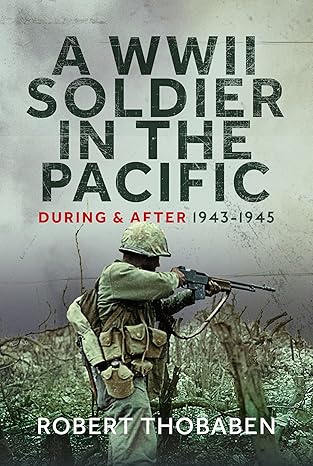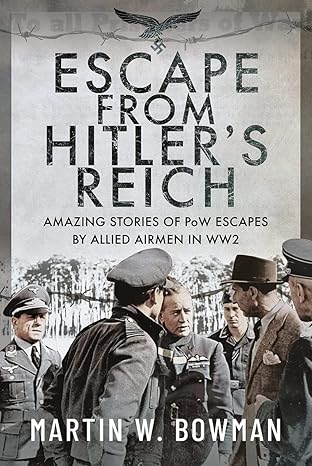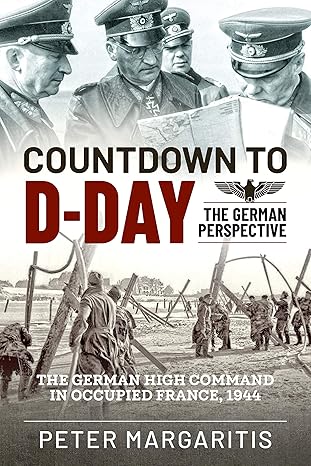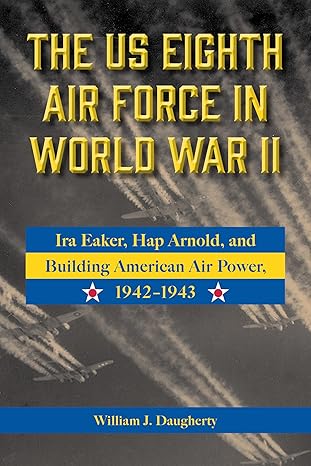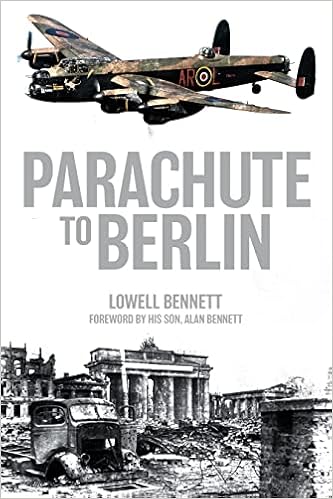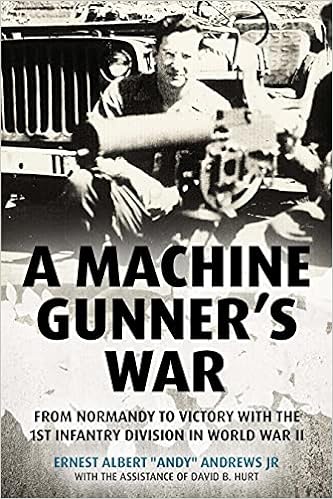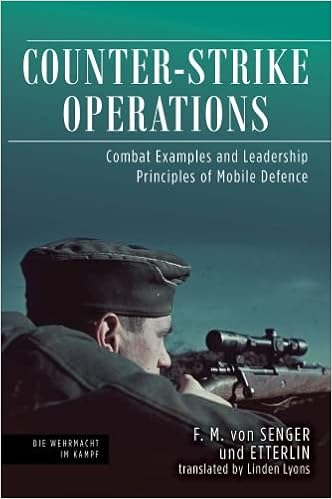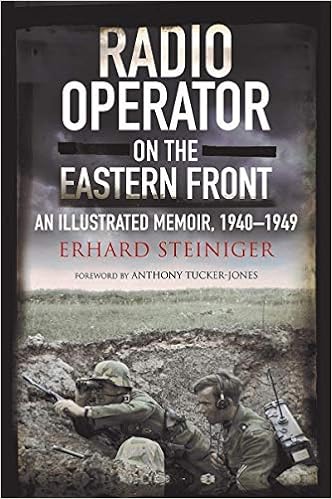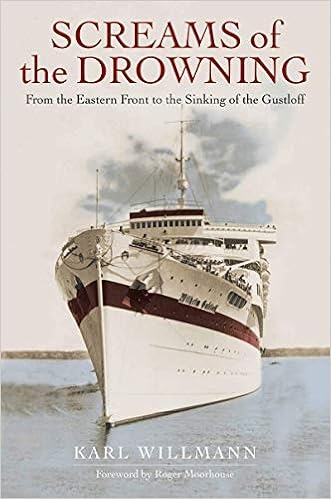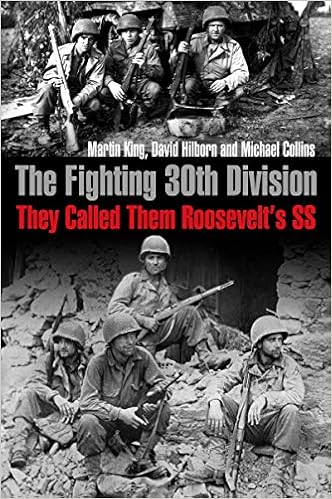Behind Enemy Lines: Raff’s Tunisian Task Force and Early Allied Cooperation in North Africa, 1942–43
By Carson Teuscher

An Arab farmer wanders onto a field somewhere in North Africa.
(Paul Robinett Collection, Marshall Library, Lexington, VA)
Introduction
Here, in a small way, was that friendship Lafayette had extended long ago, and General Pershing had returned, now renewed on the plains of Algeria near Youks les Bains.[1]
- Edson D. Raff
Eighty years ago, inexperienced Anglo-American forces nervously waded ashore on the beaches of North Africa. The amphibious Allied landings known as Operation Torch constituted the first American combat deployment across the Atlantic in World War II. It was also the first time American and French soldiers had fought one another since the unofficial naval “Quasi-War” of 1798-1800, and, to that point in history, the largest amphibious invasion the world had ever seen.
The landings went better than anticipated. Within three days, the invasion’s task forces secured their primary objectives. Vital ports, rail infrastructure, supply depots, and roads across the Maghreb lay safely in Allied hands. Disobeying orders from Vichy, French North African military commanders agreed to help the Anglo-Americans drive the Axis from the African continent. Almost immediately, the three newly-minted allies turned their gaze east to Tunisia—a prize they hoped to capture before the enemy arrived in force.

A relief map of Tunisia.
(Paul Robinett Collection, Marshall Library, Lexington, VA)
The gambit to quickly capture Tunis would ultimately fail. Setbacks over the ensuing months tempered expectations for quick victory. Operating out of the heavily reinforced Tunis bridgehead, German and Italian mechanized units halted the anemic Allied advance in the foothills west of the city.
With very little time to impose order in the rear, establish air superiority, or ferry supplies to frontline units, Allied momentum ground to a halt. Uncontested German aircraft haunted exposed convoys; enemy armored thrusts surprised green Allied soldiers; winter rains turned the arid, mountainous landscape into a sea of mud. Visiting the frontlines on Christmas Day, 1942, a sick and sleep-deprived General Dwight D. Eisenhower reluctantly agreed to end the assault on Tunis to build up for another attempt in the spring.
There were few positives to draw from the first phase of Allied operations. Almost everything that could go wrong, did: “I think the best way to describe our operations to date,” Eisenhower later confided to his successor at the War Department’s Operation’s Division, “is that they have violated every recognized principle of war, are in conflict with all operational and logistic methods laid down in textbooks, and will be condemned, in their entirety, by all Leavenworth and War College classes for the next twenty-five years.”[2] A dour view—albeit one made with some reason.
There were notable exceptions to Eisenhower’s damning prognosis. Between November 1942 and January 1943, an enterprising American paratrooper named Edson D. Raff led an improvised multinational task force deep in the Tunisian desert during the early stages of the North African campaign. Lauded for its never-say-die attitude, Raff’s motley team successfully shielded the Allied flank during the first drive on Tunis—often proactively from behind enemy lines—conducting a series of successful operations before its dissolution in early 1943.
Widely forgotten today, Raff’s Tunisian Task Force embodied all the good elements of the Allies’ haphazard, slapdash North African campaign—an improvised force endowed with the pluck, flexibility, and resilience required to excel in adverse circumstances.
The Jump into North Africa
Edson D. Raff began his vaunted paratrooper career in June 1941 as a volunteer in the newly-activated 501st Parachute Battalion. Stationed in Hawaii as a first lieutenant in the 23rd Infantry Regiment prior to joining, the New Yorker felt his “commercial pilot’s license” and “yen for adventure” qualified him for the upstart paratroops.[3] He found a natural home at Fort Benning; suffering through conditioning courses he characterized as “downright hard labor,” Raff learned to pack parachutes and simulate combat jumps before proceeding onto the real thing.

Colonel Edson Duncan Raff (1907–2003), commander of the Tunisian Task Force.
(Wikipedia)
Raff soon qualified as a paratrooper. Eager to command a company in battle, an unexpected call as a staff officer in the Provisional Parachute Group dampened his hopes. Still, his chance came. The day before Pearl Harbor, Raff took command of the 2nd Battalion of the 503rd Parachute Infantry Regiment (PIR)—the second of two newly-created parachute regiments in the U.S. Army.[4]
Throughout early 1942, Raff and his men wondered whether they would make their combat debut against the Japanese or the Germans. Orders to ship to the British Isles removed all doubt. With Anglo–American planners finalizing the decision to invade North Africa, Raff’s paratroopers became “the vanguard of many American ground combat troops soon to arrive in England.”[5]
For five months the American paratroopers trained alongside their British counterparts in the beautiful English countryside. With each passing week, morale diminished: The men grew restless; Raff heard nothing from his superiors about impending operations. Everyone wanted to get into the fight.
Then, everything changed. In a secret visit to London that autumn, General Mark Clark asked Raff whether he and his battalion could successfully seize and hold an inland airfield in support of an amphibious landing. Raff responded in the affirmative: “There is no doubt in my mind but that we can accomplish the mission,” he replied, “provided: (1) we get a break by the Air Corps and (2) by the weather. And provided (3) I am permitted to command my paratroopers when we hit the ground.”[6] This self-confidence served him well in the coming months.
Frenzied preparations preceded the jump into North Africa. Study sessions, overland hikes, dress rehearsals, and practice jumps occupied the battalion’s time. Rough Irish weather portended worse to come during winter in the Maghreb.
Finally, late on November 7, 1942, Raff and his men congregated on British airfields prior to their departure. Raff’s briefing reflected the mission’s unique logistical challenges and the uncertainty surrounding their prospective French enemy:
You all know, of course, you’re going on a mission. Some of you may have guessed where it is. It’s not Leningrad, although that city is approximately the same distance we’re going to fly to reach Oran, North Africa. We’re going to have a difficult job because some people down there will want to fight us and some won’t. If they welcome us—and some authorities say they will—we won’t fire a round. If they don’t—you have your orders![7]
As the first American paratroopers to enter the war against the Axis, Raff’s men experienced a strange baptism by fire—almost all of it beyond their control. Taking off in thirty-nine heavily-laden C-47 troop carrier planes, the paratroopers believed they were flying 1,500 miles to Oran’s La Senia airfield—said to be uncontested—whereafter they would proceed to secure Algeria’s strategic port of Bône.
The plan did not survive long. Favorable weather forecasts proved misleading. Flying through thick pockets of cirrus clouds at 10,000 feet to avoid German fighter interceptors, transport planes strung out or went missing in the darkness. “Nothing looked familiar,” Raff recalled of their dawn approach in North Africa. “Though it was sacrilegious to think such a thought at so crucial a moment, I could not help but wonder if we were lost.”[8]
Pilots circled to regain their bearings. Fuel ran dangerously low. One plane landed on a desert flat to consult with curious, French-speaking Arab locals. They confirmed the Americans were one hundred miles from Oran.
Flying north until they saw a massive dried inland mud lake known as the Sebkra d’Oran, C-47s began taking French anti-aircraft fire as they passed the La Senia and Tafaraoui airfields, a sure signal their peaceful landing plan was compromised.
Raff’s scattered paratroopers, mentally preparing to fight the French, jumped squarely between both airfield objectives—in part to relieve their deplaned comrades pinned down by enemy fire on the Sebkra. Landing hard on a rock, Raff suffered a lower rib contusion. He and his men gathered their gear and carefully proceeded. Before long, they identified the “enemy” as part of an American armored unit— “an undramatic ending to the first combat jump!”[9]
Over the ensuing days a clearer picture of their chaotic landing in North Africa emerged. While all C-47s had landed without incident, twenty percent of Raff’s forces were rendered combat ineffective, scattered, as Raff later said, “from hell to breakfast” across parts of Gibraltar as well as Spanish and French Morocco.[10] Those who made it to the Sebkra reorganized, beginning their thirty-five mile-trek over mud that felt like “your feet were walking on fly paper” to secure the Tafaraoui Aerodrome.[11]
Locating three C-47s that still had enough fuel to fly, Raff dispatched some eighty paratroopers to help guard prisoners at the airfield. They were ambushed by French fighters en route, inflicting the first American paratrooper casualties of the war. Forming a makeshift bus service, the rest arrived at Tafaraoui by the following morning, establishing defensive positions to protect ongoing Allied air operations as Oran and Algiers fell.
Raff’s paratroopers may not have fulfilled their original objectives, but those who eventually made it to the outskirts of Oran proved their utility in their improvised role securing the Tafaraoui Aerodrome. Surviving the “longest airborne invasion in history” with the bulk of its force intact and ready for follow-on operations, French officers later told Raff that the sheer presence of his paratroopers generated conflicting and confusing intelligence reports that hindered their ability to counterattack effectively. Few Frenchmen wanted to do so in the first place; most expressed relief when their fighting orders were rescinded on November 11.[12]
From that moment on, French and American soldiers looked eastward to the coming fight in Tunisia—one they would share as brothers in arms.
The Jump at Youks les Bains
Battered, scattered, and bruised by their first combat jump in North Africa, just two short days elapsed before Allied officers asked Raff when his men could be ready for another round of action. Raff estimated 150 of his men could be ready in three days time; performing a logistical miracle, salvagers surprised him by instead preparing 300 paratroopers for the coming operation using re-rigged, reclaimed, and reassigned equipment from their first jump. They would go just one week after African D-Day.
Timeliness, of course, mattered a great deal. Reports of Axis reinforcements flooding into Tunis meant there was little time to scramble available forces east. As the most mobile, adaptable, and flexible point of the Allied spear, British and American paratroopers were among the first to reach eastern Algeria. Refueling their own planes at Maison Blanche airfield outside Algiers, Raff’s men came under the official command of British General Kenneth Anderson’s First Army that week.
A visit to Anderson’s field headquarters after several cramped nights sleeping on frigid cement hangar floors confirmed Tebessa as Raff’s target. Situated on the right flank of the Allies’ overland route to Tunis, the vital city possessed an airfield Allied commanders were anxious to deny their enemy. High elevation in the southern Algerian mountains hinted at cold nights ahead. The men packed six-days-worth of rations, organized their gear, and steeled themselves for the show.
A conversation with two Frenchmen “by the merest fluke” the day before departure complicated their plan.[13] They told Raff of another, larger strategic airbase situated in a place called Youks les Bains just north of Tebessa. At the last moment, Raff’s superiors decided the Americans would secure both airfields. They issued him 25,000 French francs to spend “on good will and intelligence” at the front; British quartermasters outfitted his men with whatever they lacked.
It was shaping up to be a difficult mission—but what airborne drop wasn’t? Twenty-two planes worth of paratroopers would depart lacking adequate maps of their target area, weather reports (no weather station was yet established in Algiers), or up-to-date intelligence. “Lady Luck smiled upon us,” Raff later reflected.[14]
Frank Kluckhohn, one of three war correspondents attached to Raff’s expedition, observed “undercurrent[s] of extreme tenseness” intermingled with “the American gift of frontier humor” as the paratroopers prepared for takeoff on November 15, 1942. It was Raff’s thirty-fifth birthday.[15] Jack Thompson, a bearded correspondent from the Chicago Tribune who counted himself among Raff’s close friends would make the jump as a civilian, becoming “the world’s first parachute reporter.”[16] “It was the most exciting moment of my life,” Thompson wrote. Reporting later, he observed:
Our plane was the first of the huge armada to take off. We picked up our fighter escort over the field, set our course, and then relaxed…I was intrigued by the scenery, flying high along the coast, then inland over the high and rugged Atlas Mountains, thru clouds and over more mountains, then finally over flatter land. Every one was thinking how inhospitable a country this would be in which to make a forced landing. During the flight we indulged in light conversation. I dozed for 30 minutes, then I was instructed in jump technique by Maj. Yarborough. I wondered how [the pilot] managed to find the landing field, for to me it was not distinguishable from numerous other flat stretches. Approaching the field, [he] sounded an alarm bell, warning us to get ready. My own thoughts were not remarkable. I was unperturbed—doubtless thru ignorance—until just the moment before the jump, when the thought came to me that there must be some easier way to earn a living. Then it came.[17]

John Thompson of the Chicago Daily Tribune.
(July 12, 1943 edition of the Chicago Daily Tribune)
350 feet above the arid Algerian landing zone, Raff nodded to his crew chief, yelled “go,” and disappeared through the door. One by one, his men followed. The air above Youks les Bains filled with dark silhouettes dangling from white silk parachutes. Safe on the ground, the men watched as a transport circled and dropped extra supplies, blankets, and ammunition at hundred yard intervals. From slit trenches dug into the perimeter of the landing zone, wary French troopers watched and waited to meet their unfamiliar ally.
Building a “Conglomerate Task Force”: Raff and Early Allied Military Cooperation in Central Tunisia
Few knew how the French, visible in their defensive positions as the Americans landed, would react. “If, instead of Allies, the French soldiers had been Nazis,” Raff later claimed, “what a slaughter would have occurred!”[18] Instead, peace prevailed. Congregating together while eager French soldiers and impoverished Arab locals helped gather parachutes and supplies, relief washed over the American paratroopers. “French and American soldiers-in-arms encircled the little American flag we had carried in a knapsack from England for just such an occasion as this one,” Raff wrote:
“The sincerity of the meeting overcame language difficulties as Frenchmen tried to speak English and Americans tried to speak French. There was open joy on the faces of our new Allies when an exchange of cigarettes took place. Some of them refused to smoke the cigarettes just then, but put them away with the care one takes with a precious stone.”[19]
After an “impromptu ceremony” in which Raff and his French counterpart, Colonel Albert “Papa” Berges, exchanged souvenirs, the two set about getting to know one another. Here, a pattern of dialogue emerged emblematic of all Franco-Anglo-American collaboration during the North African campaign: Berges did not speak English; Raff did not speak French...at least very well. Consequently, both relied on a “principal intermediary”—one Captain Roger Chauppard-Lallier, a member of Berges’ staff—to translate. Chauppard’s spoken English was serviceable, but he understood far less. He was, however, all Raff had.[20]
In light of the linguistic divide, the degree of cohesion Raff’s Franco-American task force achieved in so short a time was nothing short of remarkable. After celebrating their military reunion in what Thompson described as a “hands across the sea love fest,” Raff took stock of his new ally.[21] Berges’ 3rd Zouaves, stripped of all useful equipment by the Axis Armistice Commission after France’s ignominious 1940 defeat, offered few military advantages at first glance: Supply convoys were spearheaded by mule teams, not trucks; officers traveled by horse, not car; American paratroopers carried 450 rounds of ammunition into battle—the French, thirty-six. “Communications for the most part were slow or did not exist at all,” Raff observed. “Telephones, commercially, were terrible, but militarily, were horribly terrible.”[22]
What the French lacked in materiel, they made up for in resourcefulness and determination. French soldiers knew the terrain and local culture far better than the Americans ever could. Their contacts in Tunis relayed timely news of ongoing Italo-German reinforcement operation. In anticipation of the Axis advance, Berges’ soldiers worked day and night mining, booby trapping, and reinforcing the mountain passes to Tebessa with what scant weapons they possessed. Beyond Berges’ area of operation, French General Edouard Welvert of the Constantine Division looked to augment French forces with indigenous troops withdrawing across the Tunisian border.

Impoverished Arab children stand near an Allied convoy in North Africa.
(Paul Robinett Collection, Marshall Library, Lexington, VA)
Raff established his command post adjacent to “Papa” Berges’ headquarters in an old Roman fort and immediately began coordinating the defense of the region. Essential railways converged in Tebessa, making it one of several logistical lynchpins of the Allied effort in Tunisia. While desperately trying to establish phone contact with Allied Force Headquarters in Algiers, Raff began working with Colonel Schwartz, an energetic, physically handicapped officer sent by General Welvert to oversee the defense of the city and its avenues of approach. Schwartz relied on the linguistic talents of Elizabeth Lefebvre, a French Red Cross ambulance driver, to help him communicate. Elsewhere, French soldiers provided the Americans with hot meals, baled straw to sleep on, and officer quarters in a local weather station.
With Tebessa and Youks les Bains secure, Raff contemplated expanding his operation. In Gafsa, a small village with its own airfield well south across the Tunisian border, French defenders lay exposed to enemy attacks. Attaining permission from Clark on the condition he advanced no further than Gafsa, Raff organized a patrol the next day. Forty paratroopers commandeering two commercial buses departed Tebessa. Raff’s bus, chauffeured by a flighty Tunisian, broke down en route. While some in Raff’s party suspected foul play, the development forced the irritated commander to hitchhike back to Tebessa to find an alternative. He settled on a fearless Sicilian from Tunis comfortable fighting whoever was in front of him.

Arab locals near Gafsa cross paths with American forces in central Tunisia.
(Paul Robinett Collection, Marshall Library, Lexington, VA)
Raff would make the treacherous drive to Gafsa many times over the coming months. Arriving on November 17, he found the headquarters of the Chasseur d’Afrique, a mixed French unit responsible for patrolling the Tunisian desert east of the Algerian border. The unit was commanded by Commandant Manceau Demiau, a debonair, unflappable combat veteran with interwar diplomatic experience in Brazil. Raff found Demiau considerate and cooperative. Tapping into an extensive, highly effective intelligence network spread through the region's rural hamlets and villages, Demiau allowed Raff to relay hour-by-hour updates on enemy movements back to Algiers. As the first news Allied commanders in Algiers received from Tunisia, it was an auspicious start to a fruitful military partnership.
With its serviceable airfield and 48,000 gallons of high octane fuel stockpiled near the city, Raff and Demiau knew the Axis would soon target Gafsa. As they prepared plans to delay the enemy’s advance, they ran into a familiar problem: Raff and Demiau did not speak the other’s language well-enough to plan serious military operations. They came to rely on a non-commissioned officer nicknamed “Johnny” to interpret their conversations. Raff later noted how Johnny “saved many headaches by being the intermediary between the Chasseur d’Afrique and us Americans.”[23]
Humble beginnings marked the earliest Allied cooperation in central Tunisia. French and American soldiers made use of all means at their disposal to impede the enemy. One section of saboteur paratroopers commuted in civilian cars and French trains to blow railroad tracks behind enemy lines; another group of the Chasseur’s antiquated armored cars managed to intercept and derail an enemy troop train, killing many Germans who made the mistake of disembarking to investigate. Early attempts to coordinate close air support missions with American P-38 fighters dispatched from Algiers ended in failure when most got lost and ran out of fuel flying over the unfamiliar desert. But as more and more enemy forces poured into the Tunisian bridgehead, Raff knew the odds were stacked against his outgunned unit.[24]
Defanging the German Pincer: The Defense of El Guettar and Sbeitla
As enemy pressure on Raff’s positions mounted, the road connecting Gafsa and Tebessa became more exposed, threatening to cut Raff’s force in two. Knowing they would be more effective withdrawing until they could defend Gafsa with suitable reinforcements, Raff and the Chasseurs destroyed the fuel depot and made a speedy flight back to Youks les Bains. There they met the American reinforcements they’d hoped for—a mobile 37-mm anti-tank platoon airlifted in from Algiers and Company “B” of the 701st Tank Destroyer Battalion now part of Raff’s growing “Tunisian Task Force.”[25] The revamped unit planned to recapture Gafsa the following morning despite valid complaints from Captain Gilbert Ellman’s tank destroyers exhausted after their multiday 1,000-mile journey from Oran.
The plan played out to perfection: At night, a lone French operator known as the “Alsatian” severed Axis phone lines. Raff’s motorized column approached Gafsa at dawn, while a flight of P-38s strafed enemy vehicles in the vicinity. Following the sortie, French and American infantry enveloped the town while Ellman’s self-propelled guns found their mark, destroying anti-tank and machine-gun emplacements around the city. The encircling action forced German units to flee; Raff lost one French armored car in the fracas. By morning, Gafsa was again safe in Allied hands.
There was little time to rest. That same afternoon, Welvert’s headquarters informed Raff of an enemy column threatening Tebessa from the south. “Tebessa will fall,” a French aide told Raff, “unless you come immediately.”[26] There was more to consider; almost simultaneously, a French patrol notified Raff of Italian armor from Gabés closing in on an oasis town called El Guettar just twelve miles south of Gafsa. They were being surrounded. Weighing the strength of each pincer, Raff went with his intuition: While awaiting confirmation of Welvert’s intelligence, his men would meet the enemy south at El Guettar.
Raff dispatched his southbound forces on the afternoon of November 22. Using reconnaissance jeeps to draw fire, Ellman’s men successfully engaged multiple enemy tanks with armor-piercing shells while machine gunners peppered fleeing infantry. By dusk, five Italian medium tanks lay smoldering in flames as Raff’s men rolled back to Gafsa. Later, the French found four more abandoned tanks further east.
The attack on El Guettar had exhausted Captain Ellman’s roadworn tank destroyers. Raff, sympathetic to their fatigue, nevertheless could not let them rest; he urgently needed them to meet the enemy’s northern pincer. In response to Welvert’s call, Raff sent forty paratroopers along with Ellman’s company on a night drive north to hunt tanks near Thelepte while the rest of his force prepared to defend Gafsa from a possible counterattack. Less than one day after their first engagement, Ellman found the enemy waiting one hundred miles from Gafsa near the Roman ruins at Sbeitla.

Roman victory arch at Sbeitla looking east toward Faid. (Paul Robinett Collection, Marshall Library, Lexington, VA)

The Roman ruins at Sbeitla. (Paul Robinett Collection, Marshall Library, Lexington, VA)
In a lopsided fight, Ellman’s men drove the enemy from the city, destroying nearly a dozen tanks while capturing Italian trucks, ammunition, and weapons in the process. With nearly all his own ammunition expended, Ellman ceded the valuable crossroads town and any foreign fighting equipment he did not need himself to an arriving French infantry unit—a pattern soon to repeat itself in similar raids across central Tunisia.
Within a span of nineteen hours, Ellman had successfully fended off two enemy columns separated by a distance of one hundred miles. Of the fight, Thompson wrote, “By this time the German intelligence officers must have been completely bewildered and figured that we had a much larger and stronger force running around the country.” Citing his company of tank destroyers, the French awarded Ellman the Croix de Guerre for outstanding leadership during the engagement at Sbeitla. Shortly thereafter, they made the newly promoted Colonel Raff a chevalier of France’s Legion d’Honneur.[27]

Welvert pins the Legion d’Honneur on Raff. (Wikipedia)
In just two short weeks, Raff’s composite task force had devised an efficient strategy to engage the enemy despite their limited means: From his new command post at Ferianna between Tebessa and Gafsa, Raff built up a mobile reserve of tank destroyers he would use to repel enemy columns wherever they appeared. Constant patrolling provided insight into changing developments within his area of operation; forward observers directed flights of American fighters on occasional close air support missions; American paratroopers and French camel, cavalry, and armored car units executed ancillary raids, protected lines of communication, and supported defense efforts where they could. Following every engagement, Raff ensured the French had enough material capabilities to defend their own territory.[28] And thus the pattern repeated itself.
The longer it fought, the more renown Raff’s men achieved. With Anderson’s First Army facing considerable difficulties further north, Eisenhower was eager for his headquarters to disseminate any positive news from the battlefront. War correspondents did their part, depicting Raff as a “tough two-fisted fighter and natural born leader.” They published stories of how his daring “little expeditionary force” successfully held 10,000 square miles of contested territory, bluffing and baiting the Axis into a string of devastating defeats.[29] The fame was not enjoyed by all; with part of his unit attached to Raff’s force to assist during the month of December, Lt. Colonel John Bowen, commander of 3rd Battalion, 26th Infantry Regiment, privately complained that “Raff’s men were stealing the limelight.” “Serving under Raff who actually commanded only 80 paratroopers is a bit awkward,” he wrote, “as my command is over 900.”[30]
Raff’s leadership spoke for itself, garnering the praise and trust of his superiors. By December, his versatile force had more than doubled in size. Though most of his paratroopers—ill-equipped for protracted ground operations—had been evacuated to Algiers for rest and refitting after several weeks of continuous service, Raff incorporated a newly arrived section of British engineers who supervised the laying of some 20,000 mines and booby traps throughout the region, a company of Algerian Tirailleurs (riflemen), as well as a host of anti-aircraft, anti-tank, armored infantry, and service elements brought in from across the French and American armed forces.[31]

A document detailing the order of battle of Raff’s force in Tunisia from a conference held at AFHQ dated November 26, 1942. Note its multinational composition. Source housed in WO 204/1050 at the British National Archives in London.
Together, the Tunisian Task Force plotted its next move. Further east, friendly spies noted the arrival of several hundred German and Italian soldiers in the Faid Pass. The pass and its neighboring oasis town served as a gateway connecting the flat coastal plain with Allied positions scattered throughout the mountain-lined passes of central Tunisia. “The more we thought about it,” Raff recollected, “the more we realized it was the key” to holding the region. Aware of a First Army offensive being planned around the same time, they made the decision to launch a diversionary attack on Faid on December 3. Hoping to capture the pass in a surprise operation, they would then “make it into a fortress.”[32]

A view of the western side of the Faid Pass.
(Paul Robinett Collection, Marshall Library, Lexington, VA).
Attack on Faid
Moving toward Faid from diverse jump-off points on the night of December 2, Raff’s skulking motorized column grew as new elements joined the procession. Several hours before dawn, the multinational strike team reached a camel track five miles south of Faid they would use to approach their objective. Guided through the darkness by knowledgeable Frenchmen, British engineers probed for mines while armored vehicles, infantry, and support trucks navigated the precipitous wash.
As dawn streaked over the eastern horizon, the task force could see P-38’s strafing the rocky pass. The darkness led Raff’s infantry to believe they were close to their objective; dismounting their trucks while the lead tank destroyers sped ahead, they quickly recognied they were still three miles away. To make things worse, German artillerymen spotted the approaching American vehicles before they were in position. So much for the element of surprise.
Fire emanated from the mountains ahead. Accurate enemy rounds smashed into the exposed, open-tops of American self-propelled halftracks, killing several crewmen before they could react. Determined gunners returned fire, scoring several hits before Captain Ellman ordered his men to fall back. The engagement left his gun crews decimated.
The ground battle stalemated as the day wore on. Bowen’s infantry, supported by a company of Tirailleurs, established mortar positions to target the hidden enemy beyond Faid; their subsequent assault on the enemy-held foothills was eventually repulsed. Friendly fire from a P-38 killed more of Ellman’s men; distant clouds of dust created the illusion of enemy reinforcement. Observing the battle from afar, General Welvert offered Raff an additional batch of Algerian ground troops supported by a battery of French artillery to continue the fight into the next day. Raff was grateful for the assistance.
The attackers spent an uneasy night preparing for the battle’s next phase. At daybreak, Welvert’s artillerymen launched a point-blank salvo of timed fragmentation shells into the enemy mountainside, covering Ellman’s tank destroyers as they engaged a newly arrived group of enemy tanks. The tanks, they quickly discovered, were clever bait; appearing from the east, German JU-88’s began a series of pinpoint strafing runs that would continue through the afternoon.
Fixing bayonets around 3 p.m., the Tirailleurs led a final assault on the fortified enemy positions. American mortars and French artillery pounded away in support. Soon, the first of many shell-shocked German soldiers began to surrender. It was a hard-earned victory for Raff’s allied force, which suffered one hundred dead, wounded, and missing in the battle.

The result of German strafing in Tunisia.
(Paul Robinett Collection, Marshall Library, Lexington, VA)
The victory at Faid yielded immediate results. Captured German maps provided an accurate impression of Axis plans in the region; feelings of faith among the fighting Franco-American forces grew through close cooperation. The French began reinforcing the pass immediately, overseen by Raff and Welvert who were both determined to make it “a mountain citadel.”[33] Meanwhile, the Americans decamped to nearby Arab villages to act as a mobile reserve.
Orders from Allied headquarters outlined Raff’s mission for the remainder of 1942: Defend friendly airfields from enemy attack; inform headquarters of any developments in central Tunisia; assist the French; and maintain force cohesion. The constant threat of air raids demanded vigilance of Raff’s Faid force. British sappers blew roads, laid mines, and converted abandoned enemy munitions into booby traps. Now in control of a secure triangle of territory incorporating Tebessa, to Tozeur, and Faid, Raff’s men could await the seasonal rains proud of their collective efforts.
Air and ground activity on both sides all but ceased with the arrival of winter. With roads rendered all but unusable by overflowing streams and tacky mud, Raff used the time to rest and refit his men. Bolstering his defensive garrison at Gafsa and Ferianna, patrols covering tremendous distances on the road to Gabés regularly harassed enemy vehicles and emplacements. In one notably successful night raid on the garrison at Maknassy, Colonel Bowen and eighty infantrymen killed several dozen unsuspecting Italians while netting twenty-one prisoners. For his efforts, Bowen joined Raff and Ellman as a recipient of the French Croix de Guerre.
All offensive Allied operations in Tunisia were postponed indefinitely by Christmas. The men celebrated a strangely quiet holiday season far from home. Bitter cold, strengthened defenses, occasional dogfights, and incremental reinforcement characterized the late December lull. A botched paratrooper night jump to blow a rail bridge behind enemy lines and infrequent incursions by glider-borne German paratroopers punctuated an otherwise dreary end to 1942.[34]
Dissolution
The New Year saw long-promised American reinforcements finally arrive in Tunisia. On January 10, 1943, Major General Lloyd Fredendall’s II Corps established its headquarters among the bristling supply dumps at Tebessa. Fredendall assumed Raff’s original responsibility for defending the southern Allied flank. Having completed his mission, in mid-January Allied Force Headquarters recalled Raff to Algiers and dissolved the Tunisian Task Force for good.
Few predicted the setbacks Fredendall would face defending the same terrain Raff’s Tunisian Task Force so painstakingly won. In January, a German counterattack at Faid killed half of Welvert’s gallant French garrison, forcing his Constantine Division into retreat. American counterattacks failed to recapture the pass.
Just one month later, Rommel’s Afrika Korps stormed through Faid, mauling Fredendall’s unsuspecting units as they backpedaled through the Kasserine Pass. It would go down as one of the costliest American defeats of World War II.
Raff’s Tunisian Task Force is largely forgotten today. In many ways, the debacle at Kasserine came to dominate the American imaginary, eclipsing the preceding period in our popular memory of the North African campaign. Where credited for its actions—both during the war and since—commanders, correspondents, and historians tended to heap praise on Raff’s American paratroopers, ignoring the task force’s many constituent detachments and rich multinational makeup.
Yet it was precisely the way Raff wove together a patchwork band of American paratroopers, tank destroyers, airmen, and infantry intermixed with British saboteurs, French Zouaves, Chasseurs, Tirailleurs, Spahis, and a Moroccan Camel corps that epitomized early Allied attempts to push the Axis from Tunisia. Each contingent acted as a force multiplier—unique and complementary parts of a team pursuing a singular objective.
Eisenhower, a known zealot of Allied unity, recognized the importance of Raff’s contribution, labeling the story of his Tunisian Task Force “a minor epic in itself.” “The only flank protection we had was provided by scattered French irregulars, reinforced and inspired by a small United States parachute detachment under a gallant American,” he went on to write in his memoirs. “The deceptions he practiced, the speed with which he struck, kept the enemy confused during a period of weeks.”[35]
Raff never lost sight of the import of his unit’s achievements. Overcoming a confusing dual command system and an underrated language barrier, not only did their hard-earned intelligence, allied partnerships, and forward garrisons facilitate future operations in southern Tunisia, their experience prefigured even greater Allied cohesion to come.[36]
| * * * |
Show Notes
Footnotes
[1]. Edson D. Raff, We Jumped to Fight (New York: Eagle Books, 1944), 63.
[2]. Eisenhower to Handy, December 7, 1943, Chandler, Jr., Papers of Dwight D. Eisenhower, 2: 811; Barr, Eisenhower’s Armies, 208; Rick Atkinson, An Army at Dawn: The War in North Africa, 1942–1943 (New York: Henry Holt and Company, 2002), 246; Crosswell, Beetle, 356; Howe, Northwest Africa, 330; “Appendix I (Allied Operations, Tunisia) to Annex A (Integrated Unit Operations, World War II,” Allied Interoperability in the Twentieth Century Study, Box 3, Folder 7, USAHEC, 2.
[3]. Raff, We Jumped to Fight, 4.
[4]. The War Department later renamed Raff’s unit the 509th Parachute Infantry battalion.
[5]. Raff, We Jumped to Fight, 16.
[6]. Raff, We Jumped to Fight, 22.
[7]. Raff, We Jumped to Fight, 27–28.
[8]. Raff, We Jumped to Fight, 35.
[9]. Raff, We Jumped to Fight, 39; “New Yorker Leads Chutists’ Jump to Capture North African Airfield,” The New York Times, November 18, 1942, 1.
[10]. Patrick K. O’Donnel, Beyond Valor: World War II’s Ranger and Airborne Veterans Reveal the Heart of Combat (New York: Free Press, 2001), 24.
[11]. William P. Yarborough, Senior Officers Debriefing Program, interviewed by Lieutenant Colonel Houston P. Houser III and Colonel John R. Reese, Southern Pines, North Carolina, March 28, 1975, USAHEC, 20–21.
[12]. “Pioneer ‘Chutist to Return from Army; Col. Raff, in Africa, Led First U.S. Jump,” New York Times, November 3, 1958, 43; Wes Gallagher, “U.S. ‘Chutists Made Record Hop for Airborne Assault on Oran,” The Atlantic Constitution, November 12, 1942, 7.
[13]. Raff, We Jumped to Fight, 54.
[14]. Raff, We Jumped to Fight, 54–55, 58.
[15]. Kluckhohn, “New Yorker Leads Chutists’ Jump,” 1; “Edson Raff Now Colonel,” New York Times, December 3, 1942, 12.
[16]. In addition to his journalistic duties, Thompson acted as temporary boon to Raff’s skimpy staff, “[pitching] in as a telephone orderly, runner, and journal clerk.” He made a good impression on the French. Raff, We Jumped to Fight, 56. Thompson went on to write several firsthand reports of the Tunisian campaign for the Chicago Daily Tribune during his time overseas. John Thompson, “An Old Theme in Tunisia: Axis Attacks First,” Chicago Daily Tribune, June 2, 1943, 5.
[17]. Jack Thompson, “First Story of How Paratroops Fight in Africa: Tribune Writer Tells of Leap from Plane,” Chicago Daily Tribune, November 28, 1942, 1.
[18]. Raff, We Jumped to Fight, 63.
[19]. Raff, We Jumped to Fight, 63.
[20]. O’Donnel, Beyond Valor, 25; Raff, We Jumped to Fight, 64.
[21]. Thompson, “First Story of How Paratroops Fight in Africa,” 1.
[22]. Raff, We Jumped to Fight, 65–66.
[23]. Raff, We Jumped to Fight, 85.
[24]. By this stage, Raff’s multinational force in Gafsa consisted of only a few hundred French armored cars, 160 American paratroopers, and 15 British seamen who, having survived the destruction of their Malta-bound convoy, fled their prisoner labor camp at the phosphate mines between Gafsa and Tozeur when they heard of the Allied landings. Raff armed the British volunteers with old French rifles, who cheerfully participated in the ensuing operations despite their prior suffering. Raff, We Jumped to Fight, 91–92.
[25]. Raff, We Jumped to Fight, 99–100.
[26]. Raff, We Jumped to Fight, 107.
[27]. "French Honor U.S. Paratroop Chief", Stars and Stripes (ETO), December 14, 1942, 1; Raff, We Jumped to Fight, 126–27.
[28]. Raff waxed effusive in his praise of the French defenders: “Let me say, here and now, that when French troops are ordered to defend a locality, the engineer works concerned in that defense are erected with an expertness which puts to shame soldiers who have not had such defensive training. Gafsa soon became a bastion of the Maginot line. Thick and impenetrable road blocks were built, miles and miles of barbed wire were strung, mine fields were laid outside the defenses. Artillery within the bastion was sited to fire in every direction and to cover all approaches. There was just one weak link. It was the contempt of the French garrison for night patrolling…at night only Americans wandered toward the enemy.” Raff, We Jumped to Fight, 115–16.
[29]. “Tunisian Yanks Bluffed Nazis for 2 Months,” Chicago Daily Tribune, February 20, 1943, 6; “Tribune Writer Gives Picture of Tour in Tunisia,” Chicago Daily Tribune, December 22, 1942, 5; “Col. Raff Tells of Bluffing Axis,” New York Times, February 20, 1943, 4; Radio Digest #483, War Department Bureau of Public Relations, January 8, 1943, Henry U. Milne Papers, Box 34, Folder 2, USAHEC, 4.
[30]. Lt. Col. J.W. Bowen to Colonel Stark, 22 Dec. 1942, Box 5952, 301-INF (26)-0.3, WWII Operations Reports, NARA II. Cited in Rolf, The Bloody Road to Tunis, 67.
[31]. “Combat Operations of the 1st Infantry Division during World War II,” Allied Interoperability in the Twentieth Century Collection, Box 3, Folder 8, USAHEC, 11.
[32]. Raff, We Jumped to Fight, 120, 126.
[33]. Raff, We Jumped to Fight, 145.
[34]. For one veteran’s memory of the doomed jump at El Djem, see O’Donnel, Beyond Valor, 28–31.
[35]. Eisenhower, Crusade in Europe, 160.
[36]. In January, a Stars and Stripes correspondent followed the actions of one ten man patrol “made possible by the hard, intelligent inland fighting of Col. Edson D. Raff and his paratroopers.” “Tunis: Comunique - Allied HQ: Only Routine Patrol Activity,” Stars and Stripes, January 27, 1943, 2–3. See also G-2 Journal, Algiers to the Elbe, Part 1, Benjamin A. Dickson Papers, Box 1, Folder 2, USAHEC, 35.
| * * * |
© 2026 Carson Teuscher
Published online: 07/09/2022.
Written by Carson Teuscher.
Carson Teuscher is a Ph.D. candidate specializing in Military History at Ohio State University with minor fields in International and Modern U.S. History. He is interested in the history of coalition warfare, alliance building, and multinational military operations.
His doctoral research evaluates how the Allied coalition in the Mediterranean during World War II evolved from experimental Anglo-American origins into a complex and capable multinational military organization between 1942 and 1945.
* Views expressed by contributors are their own and do not necessarily represent those of MilitaryHistoryOnline.com.

